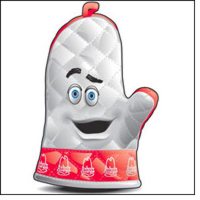Monday, February 13, 2006
Branding from the outside in. What's your perspective?
 When you think about it, brands are a lot like our children. We dress them up, feed them well, fix their teeth, and when the time is right, send them out into the world, hoping they will be successful.
When you think about it, brands are a lot like our children. We dress them up, feed them well, fix their teeth, and when the time is right, send them out into the world, hoping they will be successful.
In this process, we are "positioning" them for success. But the truth is, their success depends more on how the "outside" world perceives them, than on how we want them to be perceived.
That's what "outside-in" branding is all about--recognizing and understanding that the customer experience (what lies outside of your brand) is what shapes it the most. This is true whether you're selling rail cars or fresh flowers.
In an all too typical marketing scenario, brand communications go one way--from the brand to the customer. It's the Field-of-Dreams strategy: if we say it, they will believe it.
For example, there's a new Walgreen's drug store a few blocks from my house. It's a lot more convenient than my old drugstore, so I began using it.
Walgreen's is aggressively positioning itself as a national brand retailer. They began national advertising in 2002, and are spending around $3.6M a year to convince Walgreen's that Walgreens is the perfect, convenient answer to an imperfect world. Their tagline: "That's Life. This is Walgreen's."
Unfortunately, the Walgreen's image I carry around in my head is not as favorable as Walgreen's would like it to be. From my customer experience, Walgreen's isn't convenient; it is inept. They prove that to me on practically every visit to their pharmacy. Prescriptions are partially filled because they run out of pills, which means I have to come back. Some prescriptions are overlooked altogether. And the staff of baby pharmacists they hire look at me weirdly because I don't fit into their model of how a perfect pharmacy customer should behave. Contrast that with the work Arby's is doing. They've introduced a new customer-focused branding campaign that is creating buzz in the quickserve restaurant industry.
Contrast that with the work Arby's is doing. They've introduced a new customer-focused branding campaign that is creating buzz in the quickserve restaurant industry.
Arby's is headquartered in Atlanta, so I sat down with their VP of brand communications, Debra Mager, to learn more about Arby's new branding strategy.
Arby's was at a crossroads in 2004. They needed to make the right decisions to strengthen their brand's future and generate more momentum. Up to that point, their de facto brand identity was a talking oven mitt, something to which Arby's patrons and Arby's franchisees found hard to relate.
To Arby's and their agency, Merkley + Partners, it came down to this: It wasn’t so much about selling food as it was about giving customers the choices they wanted. More importantly, Arby's recognized that the consumer and not Arby's is redefining what quality food is. Out of this thinking came a major rebranding campaign with a new cusetomer-centric theme line: "I'm thinking Arby's"
Okay, enough about Walgreen's and Arby's. Let's talk about how your clients can benefit from a little outside-in branding. First, we have to recognize that some clients won't get it. And still others may see no immediate value in it. These are the clients who are only comfortable when they are talking to themselves.
What can you do to help enlighten your client? One thing is to become a reflection of their target audience and back up your ideas with a little research. (Nothing elaborate or expensive here, just things you can do off-the-cuff.)
For instance:
▪ You can become a "mystery shopper", just by visiting a few of your client's locations.
▪ You can do a little web research on the company, industry and market.
▪ You can visit some relevant blogs.
▪ You can conduct a few brief phone interviews with your client's customers.
All of this activity often leads to a disconnect. If the client's brand promise stresses Fast Delivery, and your impromptu research shows that customers are fed up with Late Deliveries, you can do one of two things:
1. Change the brand promise to link up better with customers' experience--i.e., The slowest delivery in town
2. Change customers' experience to match the brand promise--i.e., The fastest delivery in town.
Which would you choose?
